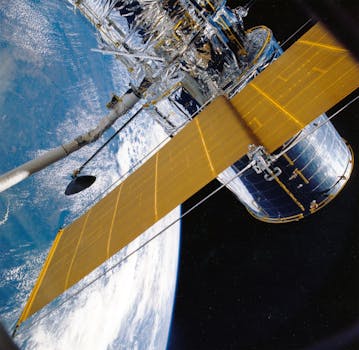From Geostationary to Low Earth Orbit: The Evolution of Satellite Telecommunications in 2023

From Geostationary to Low Earth Orbit: The Evolution of Satellite Telecommunications in 2023
Satellite Telecommunications
Satellite Telecommunications has revolutionized the way we communicate and access information. The industry has come a long way since the launch of the first commercial communications satellite, Intelsat 1, in 1965. Over the years, satellite telecommunications have played a vital role in providing global connectivity, enabling international communications, and facilitating the exchange of information.
The early days of satellite telecommunications were marked by the use of geostationary satellites, which are positioned approximately 36,000 kilometers above the equator. These satellites have a fixed position in the sky and offer a wide coverage area, making them ideal for broadcasting and telecommunications applications. However, geostationary satellites have some limitations, including high latency, limited bandwidth, and high operational costs.
Low Earth Orbit Satellites
In recent years, the satellite telecommunications industry has shifted towards the use of low Earth orbit (LEO) satellites. LEO satellites are positioned at an altitude of around 160 to 2,000 kilometers above the Earth’s surface. These satellites have several advantages over geostationary satellites, including lower latency, higher bandwidth, and lower operational costs.
LEO satellites are also more suitable for real-time applications, such as video conferencing, online gaming, and virtual reality. The lower latency of LEO satellites enables faster data transfer rates, making them ideal for applications that require instant communication. Additionally, LEO satellites can provide more targeted coverage, reducing interference and increasing the overall quality of service.
Advantages of Low Earth Orbit Satellites
The advantages of LEO satellites over geostationary satellites are numerous. Some of the key benefits include:
Lower latency: LEO satellites have a significantly lower latency than geostationary satellites, making them ideal for real-time applications. Higher bandwidth: LEO satellites can provide higher bandwidth than geostationary satellites, enabling faster data transfer rates. Lower operational costs: LEO satellites are less expensive to launch and operate than geostationary satellites. Improved coverage: LEO satellites can provide more targeted coverage, reducing interference and increasing the overall quality of service.
Challenges and Future Developments
While LEO satellites offer several advantages over geostationary satellites, there are also some challenges associated with their use. One of the main challenges is the need for a larger constellation of satellites to provide global coverage. This can be expensive and requires significant investment in infrastructure.
Despite these challenges, the future of satellite telecommunications looks promising. Several companies, including SpaceX, OneWeb, and Amazon’s Kuiper Systems, are working on developing large constellations of LEO satellites. These constellations will enable faster and more reliable internet connectivity, transforming the way we communicate and access information.



